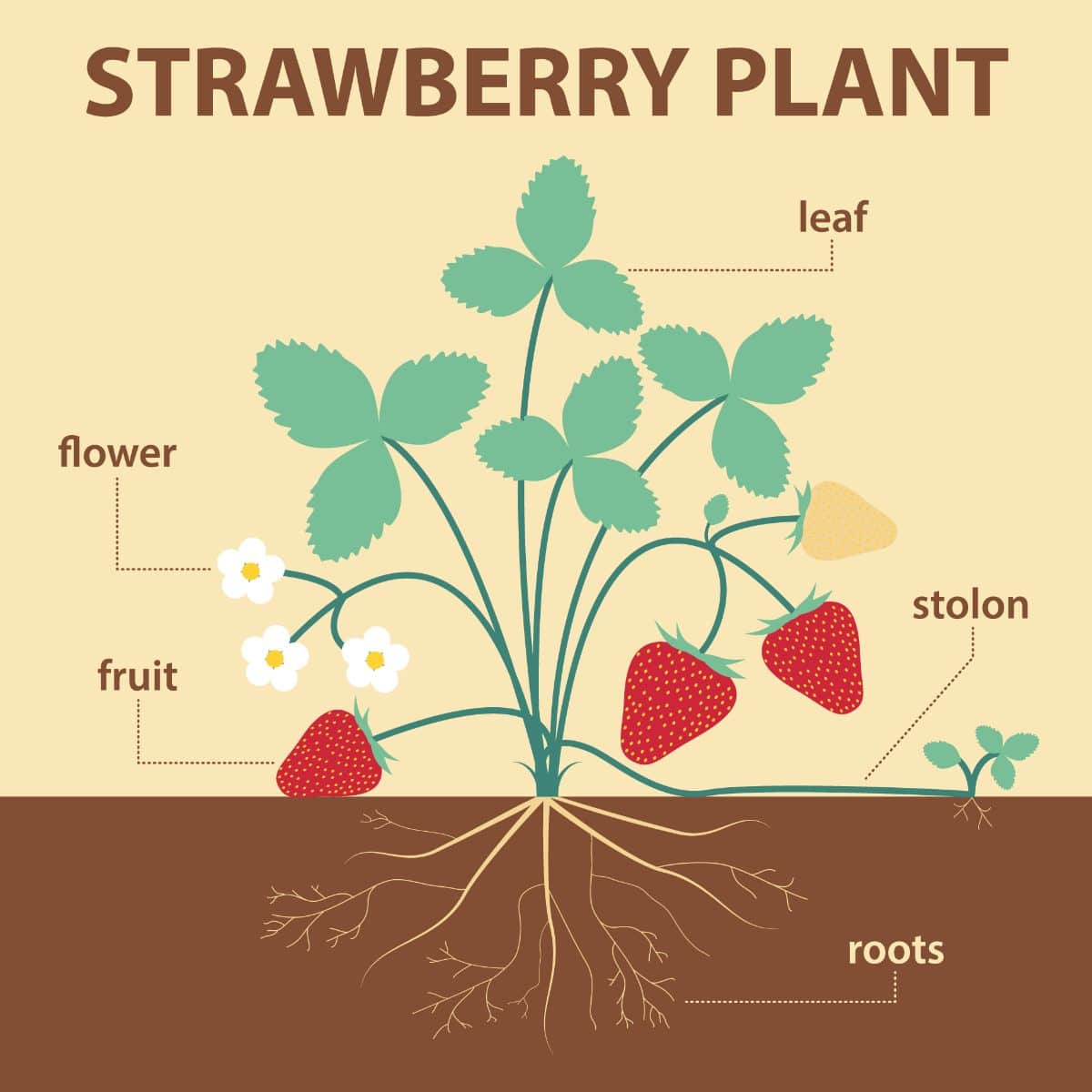Strawberries Fragaria x ananassa

Family: Strawberries belong to the family Rosaceae. The leaves are usually arranged spirally, and the flowers almost always have five leaves. Most of the fruits in the family are edible, but some of the seeds can release amygdalin if the seed is broken during digestion. The plants in the Rosaceae family, are usually little bushes, or small to medium size trees. Some other plants in the same family, are peach, cherry, plum, and almond trees.
Native location and habitat: There are different species of strawberries that are native to different parts of the world, but in America, fragaria virginiana and fragaria chiloensis are the ancestors of our modern day garden strawberry(fragaria x ananassa). Fragaria virginiana is native to North America and fragaria chiloensis is native to Chile. The two are thought to be have been first crossed in European gardens. Full sun is preferable for strawberries, along with sandy soil, and regular water.
Master chart information:
| Flat spacing (inches [or no flat rec.]) |
In-bed spacing (inches) | Expected lbs yield per 100SF (note beginning level for CAL and/or COMP) | CAL per lb | Season (F, W, Sp, Su) | Other |
| F1 |
12 in | 40lbs | 161 | Sp |
Planting, care, and harvesting: The best time to plant strawberries is in spring or late summer. Strawberry plants need about 6-10 hours of direct sunlight each day. They need to be planted with room for spreading out and their roots should be no longer than eight inches when planted. They should have plenty of drainage, along with about one inch of water each week. And the plants need even more water when they are flowering and producing fruit. The berries are fully ripe usually around the middle of summer. When harvested, the berries are picked with the cap on and about half an inch of stem still on. The strawberries need to stay on the plant until they are completely ripe, because they don’t continue to ripen once they’ve been picked.
Local experience:
SustAg data: In 2017-18, a large amount of strawberries were harvested throughout the farm. In total, last years SustAg classes harvested 34.1975lbs of strawberries!
Interview: At the farmers market in Larkspur Landing, a farmer from Monterey talked about albion strawberries which is the type he grows. He said that “they grow the best when the weather is 70 degrees and that they will die if it gets over 80.”
Challenges and Pests: Over 200 species of pests are known to harm strawberry plants, such as slugs, fruit flies, and aphids. In fact, the amount of pesticides used on strawberries in California, have made “the Environmental Working Group put strawberries at the top of their “Dirty Dozens” pesticide contaminated produce list”. As for diseases, strawberries can be affected by many types, such as powdery mildew and leaf spot. Both are fungal diseases. When watering strawberry plants, it’s best to try and not get water on their leaves, as this can induce fungal growth.
Historical information and uses: Fragaria virginiana and fragaria chiloensis are thought to have been first crossed in European gardens during the 1700’s. Fragaria virginiana was known to have small, aromatic fruits that grow in a large abundance. Whereas Fragaria chiloensis was known to have large, walnut-sized fruit. So when the two were grown close together in the gardens of Europeans, seeds were found that showed that they were crosses of the two, thus creating our fragaria x ananassa. In the 1600’s strawberries were used for the medicinal properties they were suspected to have.
Recipe: Ina Garten’s fresh strawberry jam recipe consists of…
- 2 cups sugar
- 1 large lemon zested and juiced
- 1 ½ pints strawberries halved
- Combine sugar, lemon zest, and lemon juice in a small saucepan and cook for 10 minutes on low heat(until the sugar is dissolved). Put in the strawberries and continue to cook on very low heat for 20 minutes(until it contents start to boil slowly). Cook until the the mixture gels onto the back of a cold metal spoon. Pour into two pint sized canning jars and either seal or keep refrigerated.
Bibliography:
- Garten, Ina. “Fresh Strawberry Jam.” Food Network, Food Network, 21 Nov. 2013,
- Old Farmer's Almanac. “Strawberries.” Old Farmer's Almanac, Yankee Publishing Inc, www.almanac.com/plant/strawberries.
- Personal communication, September 15, 2018
- Plant Sciences. “Strawberry: A Brief History.” When Fertilizing Go Easy on the Sea Salt // Integrated Crop and Pest Management News Article // Integrated Pest Management, University of Missouri, ipm.missouri.edu/meg/2012/5/Strawberry-A-Brief-History/.
- “Rosaceae.” Wikipedia, Wikimedia Foundation, 15 Sept. 2018, en.wikipedia.org/wiki/Rosaceae.
- “Strawberry.” Wikipedia, Wikimedia Foundation, 11 Sept. 2018, en.wikipedia.org/wiki/Strawberry.

